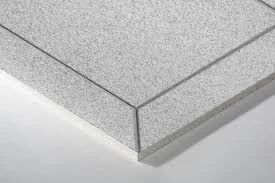Dec . 14, 2024 12:39 Back to list
Mineral Fiber Board Insulation for Improved Energy Efficiency and Thermal Performance
The Role of Mineral Fibre Board Insulation in Modern Building Practices
In contemporary construction, energy efficiency and sustainability have become paramount. One of the materials making significant strides in the insulation domain is mineral fibre board insulation. This innovative product is gaining traction due to its outstanding thermal performance, fire resistance, and environmental benefits. This article explores the characteristics, applications, and advantages of mineral fibre board insulation.
Understanding Mineral Fibre Board Insulation
Mineral fibre board insulation is primarily made from natural mineral resources, such as rock or glass, which undergo a process of melting, spinning, and forming into fibrous materials. The resulting boards are lightweight yet rigid, making them easy to handle and install. The two predominant types of mineral fibre insulation are rock wool and glass wool, each boasting unique properties that cater to different applications.
Thermal Performance
One of the critical advantages of mineral fibre board insulation is its exceptional thermal performance. These boards provide low thermal conductivity, making them effective in minimizing heat transfer. This property is particularly valuable in both residential and commercial buildings, as it helps maintain comfortable indoor temperatures, reducing dependence on heating and cooling systems. A well-insulated building can lead to substantial energy savings, contributing to lower utility bills and a reduced carbon footprint.
Fire Resistance
Safety is another area where mineral fibre board insulation excels. Both rock wool and glass wool have excellent fire resistance properties. They are non-combustible and can withstand high temperatures without melting, which makes them a preferred choice for buildings that require stringent fire safety standards. The integration of mineral fibre boards not only enhances the thermal performance of structures but also provides peace of mind to occupants and property owners.
Sound Insulation
mineral fibre board insulation

In addition to thermal and fire performance, mineral fibre boards offer excellent sound insulation properties. The fibrous structure of the boards absorbs sound waves, reducing noise pollution from external sources and ensuring a quieter indoor environment. This feature is especially beneficial in multi-family housing, commercial buildings, and areas near busy roads or industrial sites, where controlling noise levels is crucial for comfort.
Sustainability
The sustainability of building materials is a significant concern in today's construction practices. Mineral fibre board insulation is typically produced from abundant and renewable resources, making it a more environmentally friendly option compared to some synthetic insulating materials. Moreover, many manufacturers are adopting eco-friendly production methods, which further reduces the environmental impact of these products. Mineral fibre boards are also recyclable at the end of their life cycle, allowing for a circular approach in building material usage.
Applications
The versatility of mineral fibre board insulation makes it suitable for various applications in construction. It is commonly used in walls, roofs, and floors of residential and commercial buildings. The boards can be installed in new constructions as well as in retrofitting projects, providing the flexibility needed to improve energy efficiency in existing structures. In industrial settings, mineral fibre boards are used to insulate pipes, tanks, and equipment, protecting against heat loss and ensuring efficient operation.
Installation and Maintenance
Installing mineral fibre board insulation is a straightforward process that can be done by professionals or skilled DIY enthusiasts. The boards are typically available in different thicknesses and densities, allowing customization based on specific project requirements. Proper installation is essential to maximize thermal performance and prevent air leaks. Maintenance is minimal, as the boards are durable and resistant to moisture. However, it's important to periodically check for any signs of damage or degradation, especially in high-moisture areas.
Conclusion
Mineral fibre board insulation represents a modern solution to the pressing challenges of energy efficiency, fire safety, and acoustic performance in buildings. With its remarkable properties and environmental benefits, it aligns perfectly with the demands of sustainable construction practices. As builders and homeowners alike continue to seek innovative materials that contribute to energy savings and environmental stewardship, mineral fibre board insulation is poised to play a vital role in shaping the future of the built environment. By choosing this effective insulation option, we not only enhance the comfort of our living spaces but also take significant steps towards a more sustainable future.
-
Quality Ceiling Trap Doors & Access Panels | Easy & Secure AccessNewsAug.30,2025
-
Durable Ceiling T Grid Systems | Easy InstallationNewsAug.29,2025
-
PVC Gypsum Ceiling: Durable, Laminated Tiles for Modern SpacesNewsAug.28,2025
-
Pvc Gypsum Ceiling Is DurableNewsAug.21,2025
-
Mineral Fiber Board Is DurableNewsAug.21,2025
-
Ceiling Tile Clip Reusable DesignNewsAug.21,2025







